Gulp 4: The new task execution system - gulp.parallel and gulp.series
One of the major changes in Gulp 4 is the new task execution system. In this article, I want to show you what’s new and how you can migrate the best.
Task execution chains in Gulp 3 #
Before we take a look at the new, let’s see what was there previously. Usually, Gulp would allow defining a dependency to a task. It would make sure that this dependency task gets executed before the original task gets triggered. Look at this code:
// Per default, start scripts and styles
gulp.task('default', ['scripts', 'styles'], function() {...});
// Both scripts and styles call clean
gulp.task('styles', ['clean'], function() {...});
gulp.task('scripts', ['clean'], function() {...});
// Clean wipes out the build directory
gulp.task('clean', function() {...});A very basic Gulpfile. You want to build scripts and styles, but before you do so, clean the original build directory so you can start at a blank slate. The syntax is very elegant and similar to those of other build tools.
When Gulp’s started, it creates a dependency tree like the one below.
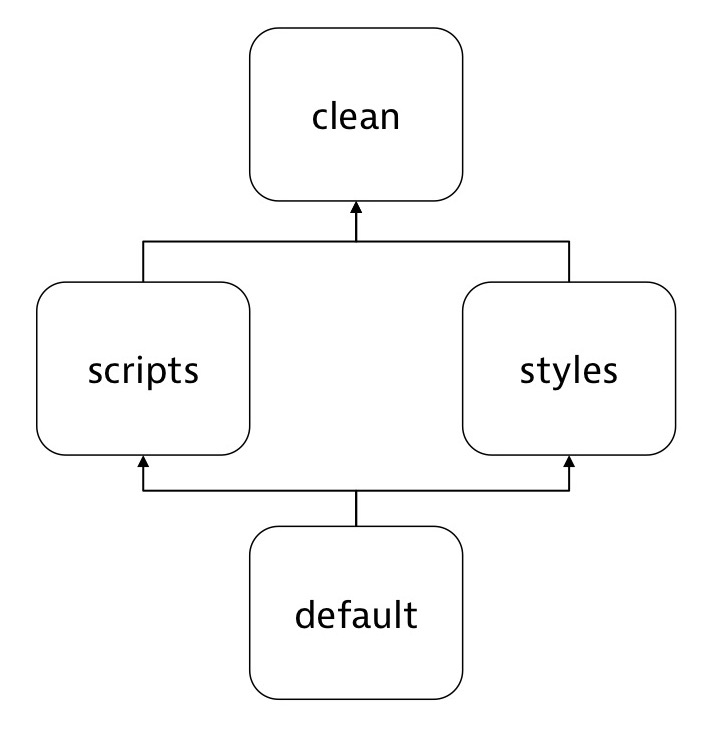
So it realizes that clean is a dependency of two tasks. In this way, it makes sure that it is executed only once.
One thing to keep in mind there: All those tasks are executed for maximum concurrency. So the execution order is something like shown in the next figure.
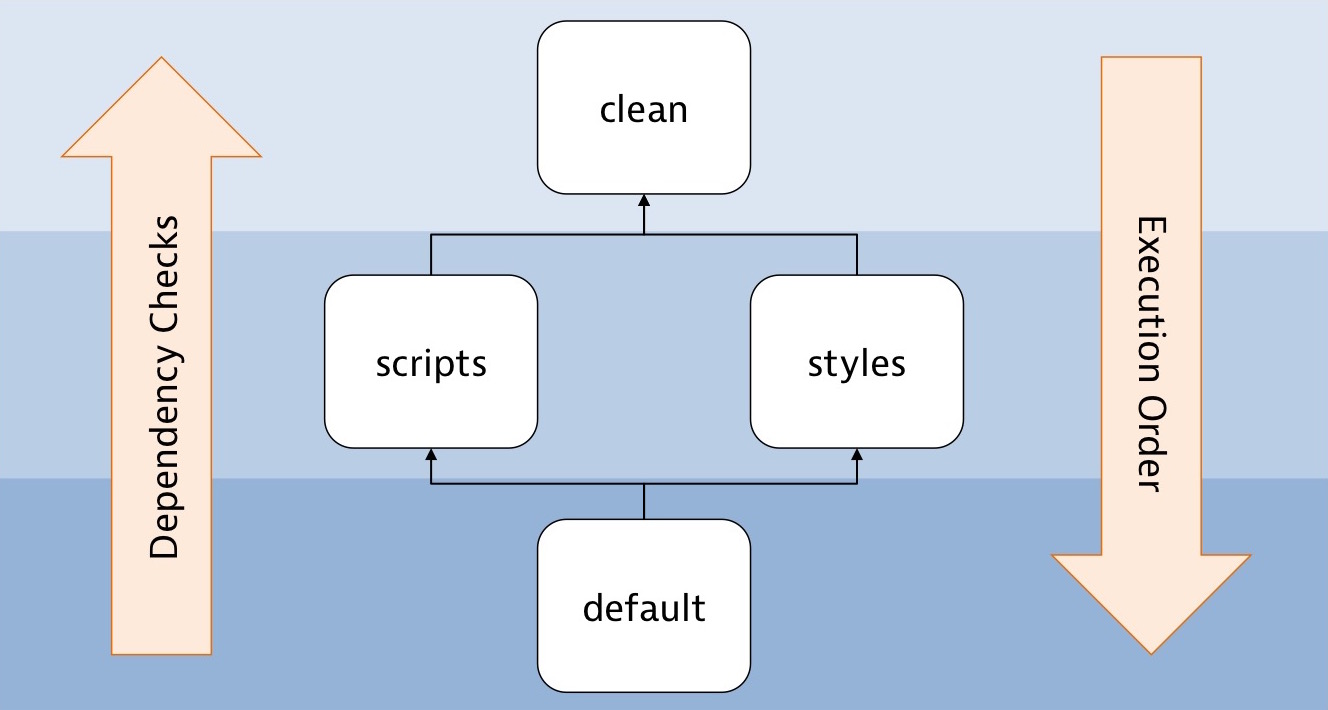
First clean, then scripts and styles in parallel, and after that we can execute the default task function.
There are however several problems with it:
- Once you define the dependency chain in that way, the execution of this dependency is mandatory.
- This is a particular problem if you want to have watchers that listen on one type only. Imagine triggering the styles task every time you change one of your CSS files. It would execute first clean, and then styles, practically deleting your efforts from “script”.
- Also, there is currently no way of executing tasks sequentially. The “first clean, then task” style of executing can be done just with dependencies, leading to the problems above.
One Gulp plugin that tried to bridge the gap here was run-sequence. It’s functionality is now part of Gulp 4 with the addition of the new task manager “Undertaker”.
Task execution functions for Gulp 4 #
Gulp 4 drops the dependency parameter completely and replaces them with execution functions that can be used instead:
gulp.seriesfor sequential executiongulp.parallelfor parallel execution.
Each of those functions allow for parameters of the following kind:
- The name of the task to execute
- Another function to execute
So if you want to execute styles and scripts in parallel, you can write something like this:
gulp.task('default', gulp.parallel('scripts', 'styles'));The cool thing is, gulp.parallel and gulp.series are functions, and
accept functions. So you can nest them as much as you want, creating
complex execution orders:
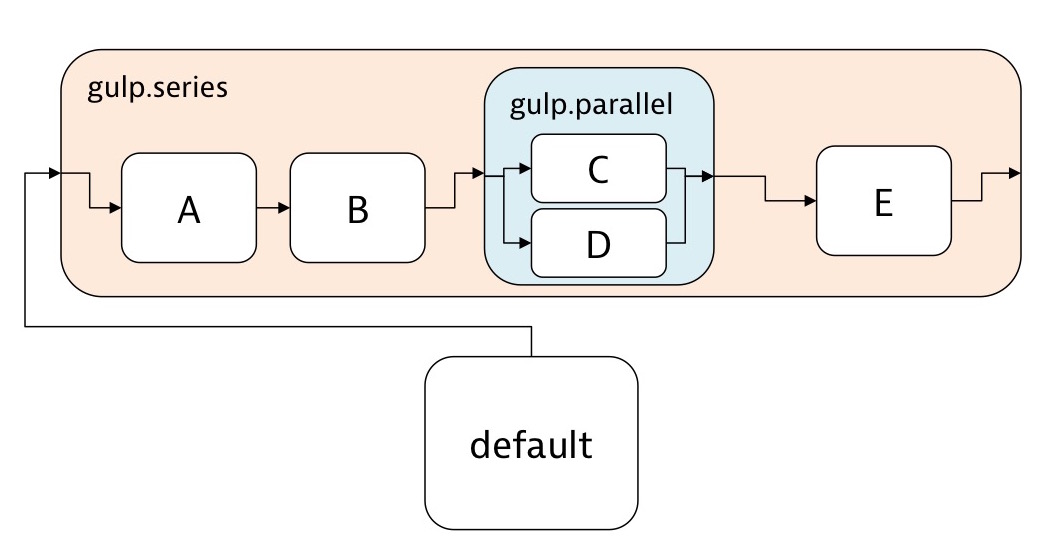
The execution of the graph above is: A, then B, then C and D parallel, then E.
Migration #
Since we aim for the maximum currency, one would think to replace all dependency
arrays with gulp.parallel functions, like that:
gulp.task('styles', gulp.parallel('clean', function() {...}));
gulp.task('scripts', gulp.parallel('clean', function() {...}));
gulp.task('clean', function() {...});
gulp.task('default', gulp.parallel('scripts', 'styles'));The first problem with this approach is that clean always gets executed with the
actual task that creates the output. In a concurrent world, this can mean that we
immediately delete the files we created. We don’t want that. So let’s exchange the
tasks that are meant to be executed after another with gulp.series.
gulp.task('styles', gulp.series('clean', function() {...}));
gulp.task('scripts', gulp.series('clean', function() {...}));
gulp.task('clean', function() {...});
gulp.task('default', gulp.parallel('scripts', 'styles'));Better. However, there are still problems. First of all, the dependency is still hard-wired: “Clean” gets called every time we call scripts or styles.
Second, Gulp 4 does not have any dependency check (because they aren’t dependencies) anymore, so our execution tree looks something like that:
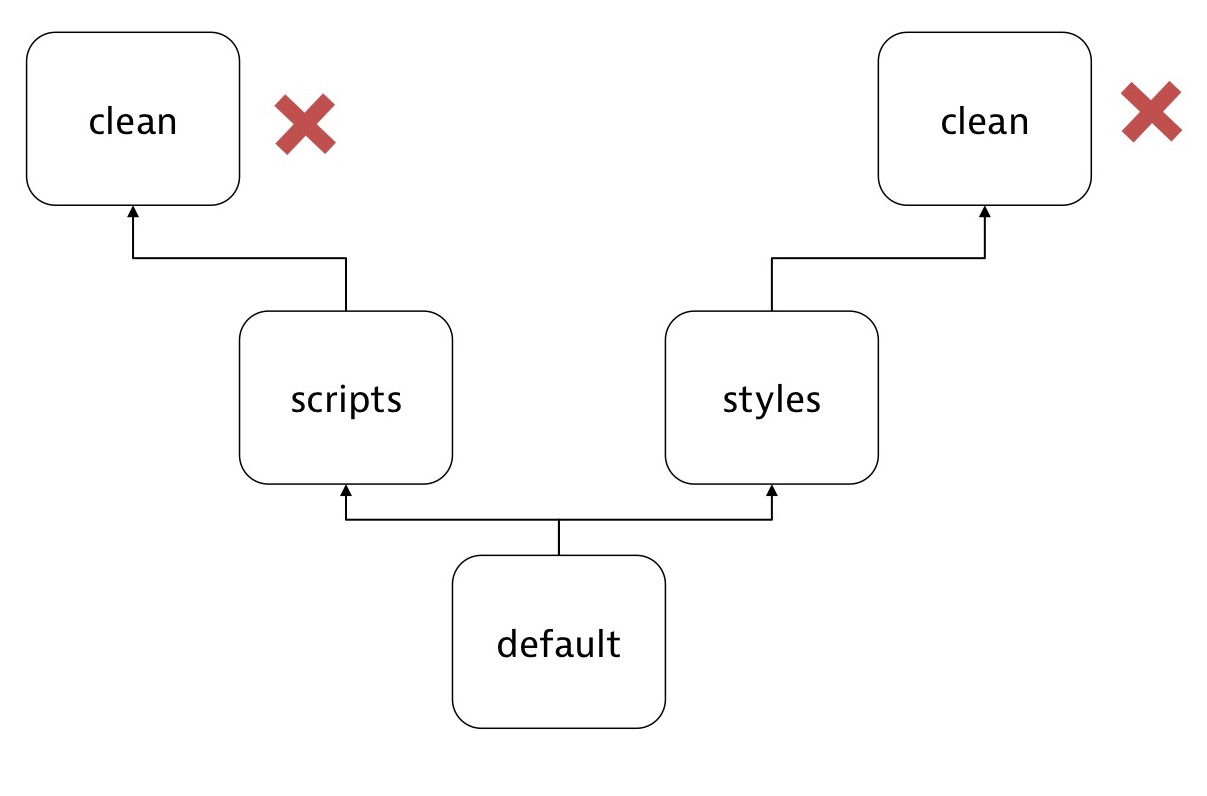
“Clean” gets executed twice. This is fatal, because it might actually be that results from one task would be deleted by the next execution tree.
To make a good and robust migration, without hard wires and by keeping the original execution order, do the following. Look at the original execution order:

The execution order of the tasks in the original tree are: clean, styles and scripts in parallel, and then the default task.
Each step that can be done in concurrent will be combined in a gulp.parallel
function. The others are ordered in a gulp.series function. Like that:
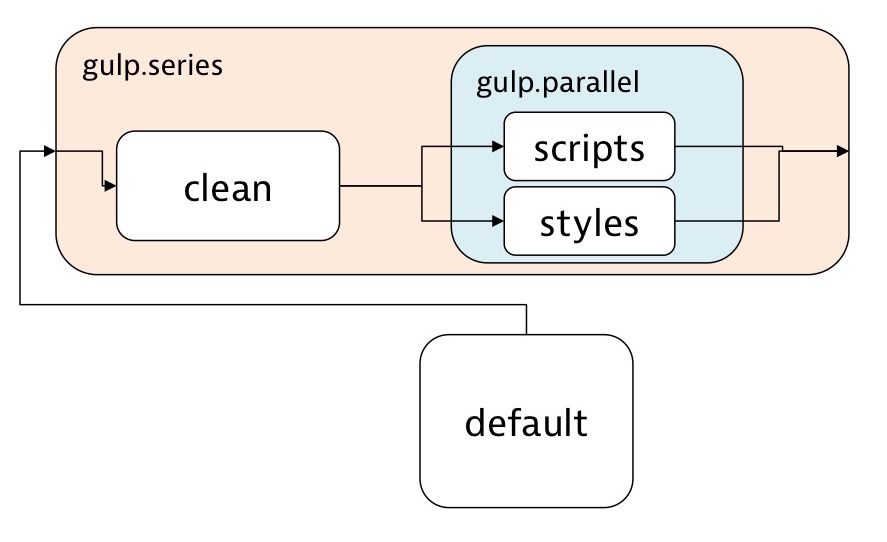
The accompanying source code:
// The tasks don't have any dependencies anymore
gulp.task('styles', function() {...});
gulp.task('scripts', function() {...});
gulp.task('clean', function() {...});
// Per default, start scripts and styles
gulp.task('default',
gulp.series('clean', gulp.parallel('scripts', 'styles'),
function() {...}));The execution order at default stays the same as previously, but all the other tasks can be used on their own, without being bound on dependencies.
Hurray for flexibility!
